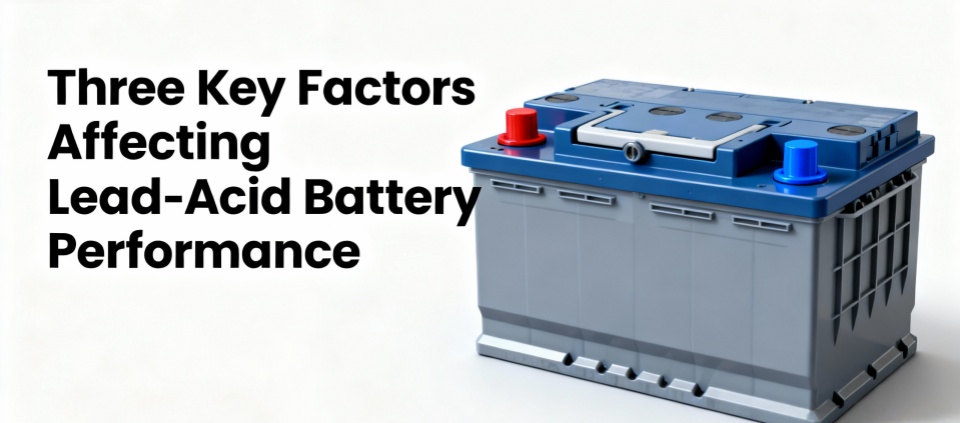Electric Forklift
Three Key Factors Affecting Lead Acid Battery Performance
Table of Contents
Lead-acid batteries continue to be widely used in areas such as industrial vehicles and warehousing equipment due to their mature technology, stable performance, and relatively low cost. The core factors affecting overall lead acid battery performance mainly include the charging method, discharge rate, and depth of discharge. For a cost comparison between lead-acid and lithium-ion batteries, please refer to “The Real Cost Comparison: Lithium vs. Lead-Acid Batteries in Electric Material Handling Vehicles”.
1. Control of Charging Method
A lead-acid battery’s charging curve shows a stable voltage rise during initial charging. As charging nears completion, the voltage increases gradually. This two-stage constant current process fully activates the electrolyte. It also prevents overcharge damage to the plates. Using improper charging currents or overly long charging times causes problems. These include battery heating, severe gassing, and a shorter lifespan. A proper charging curve is therefore key to stability and safety. This approach directly supports strong lead acid battery performance.
2. Appropriate Selection of Discharge Rate
Discharge curves show a stable voltage during medium to low-rate discharges. In contrast, high-rate discharge causes a sharp voltage drop and shortens discharge time. Long-term high-load operation stresses the plates. It also accelerates active material shedding, which harms capacity retention. For different forklift models, select a discharge current that matches the operational workload. This balances power output with service life and maintains good lead acid battery performance.
3. Impact of Depth of Discharge on Cycle Life
The cycle count curve reveals a clear pattern: deeper discharges shorten cycle life. Limiting discharge to 70% depth enables over 1500 cycles. However, regularly discharging to 100% drastically shortens battery life. We recommend a “frequent charging and shallow discharging” strategy. This practice boosts efficiency and cuts long-term costs.
In summary, scientific charging, moderate discharging, and controlled discharge depth are the three keys to extending service life. They also maintain high lead acid battery performance.
If you require Baufar lead-acid batteries. Please refer to “forklift lead-acid batteries“, We ensure every battery delivers stable, safe, and cost-effective energy performance in real-world applications.



Featured Forklift LiFePo4 Battery
80V Forklift Battery
Forklift Lithium-ion Battery 80v 404Ah for Toyota 7FB30-7FBJ35
48V Forklift Battery
Forklift Lithium Battery 51.2v 404Ah for Still FM-X
48V Forklift Battery
48V 519Ah Lifepo4 Lithium Battery for Heli CPD20/25-GB2/GD Forklift
80V Forklift Battery
80V 404Ah Lifepo4 Lithium Battery for CPD30/35-G1/G3 Forklift
80V Forklift Battery
80V 560AH Lifepo4 Lithium Battery for HELI CPD35-GD2
80V Forklift Battery
80V 600Ah LiFePO4 Lithium Battery for NICHIYU FBC25/30P Forklift
48V Forklift Battery
48V 201Ah Lifepo4 Lithium Battery for NICHIYU FBRM13H-70 Reach Truck
48V Forklift Battery
48V 225Ah Lifepo4 Lithium Battery for HYUNDAI 10/13BR Forklift